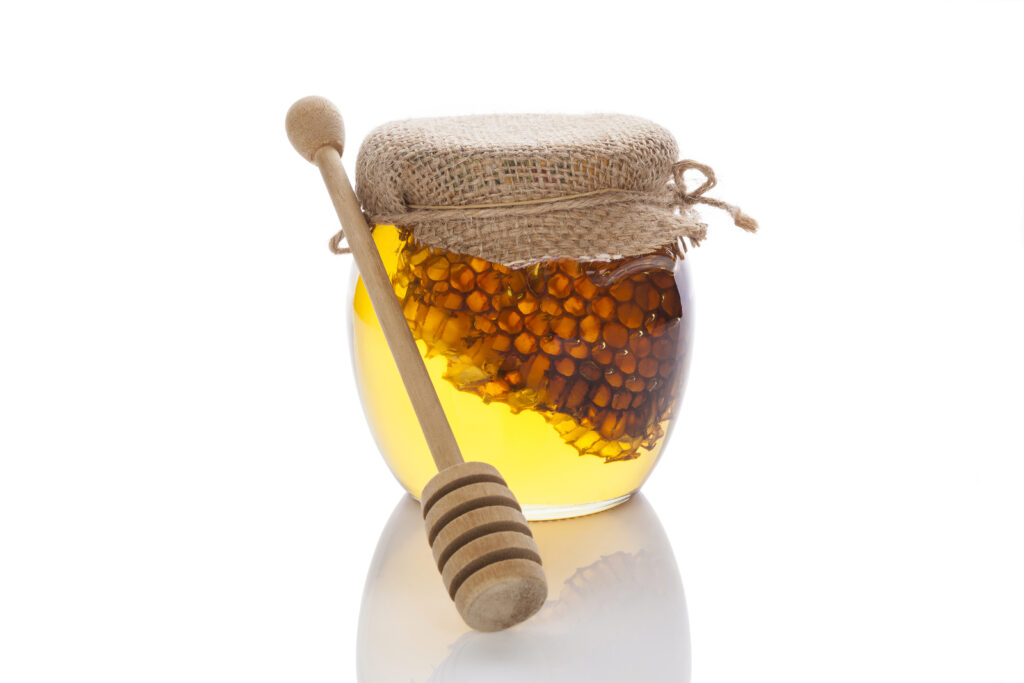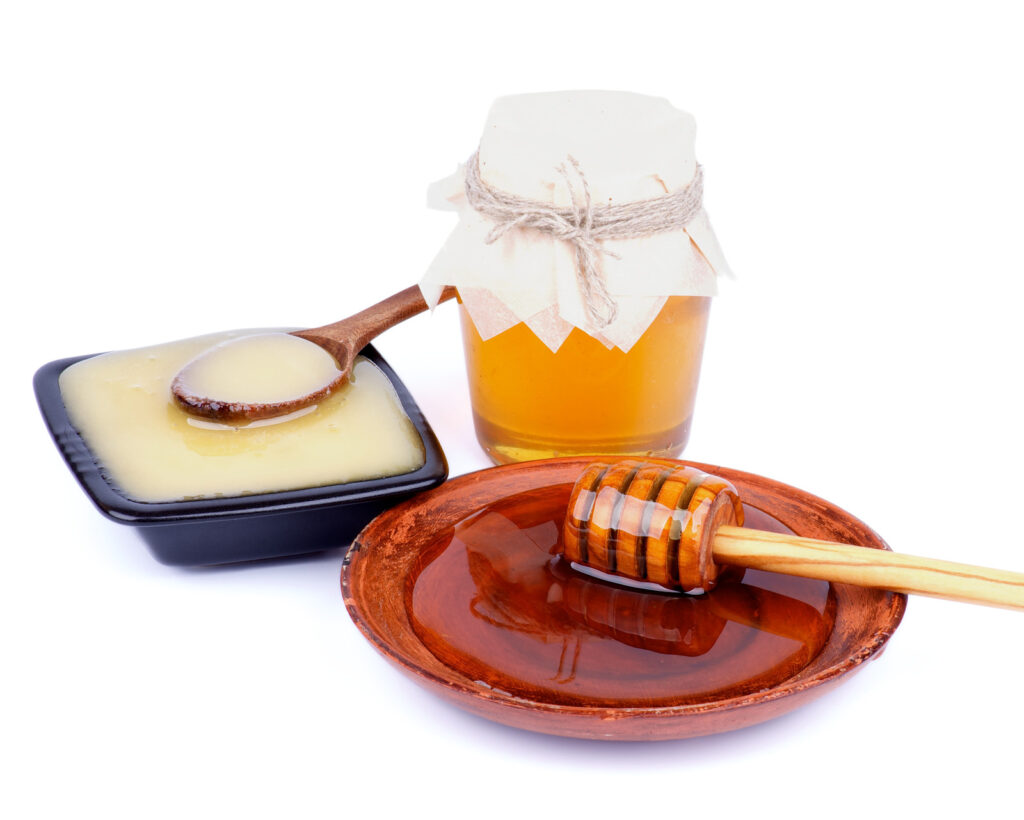Where we know that all the honey that we use comes from bees. However, not all of them are the same—the taste, color, and sweetness depend on where the bees get their nectar. Bees contribute a lot to the ecosystem and benefit us humans as well by the production of honey which is not only used as an eatable in our daily life but is used medicinally as well.
A variety of honey exists and each with its own benefit and uses, and we will discuss all of them in this article. Apart from the types, we would also educate you about raw honey, organic honey, and how long honey last.
The common types of honey:
Estimated, there are about 300 types of honey that are produced worldwide and although all of them are sweet in taste, there are various factors that make them different and unique. These factors could be the flavor, color or origin and we will discuss the different and common types of honey below:
Clover honey:
Clover honey is the widest-produced honey and has the largest production. It has a strong odor and has a mild taste of that of clover blossoms. This sweet honey has a light golden color and has a mild flavor of cinnamon. It is widely produced in Sweden, New Zealand, Canada and the United States. Compared to darker honey which contains higher levels of antioxidants, clover honey does not. However, it is a good choice for daily and all-purpose use. Clover honey is recommended to use for baking and cooking purposes. You can use it in a variety of food products such as yogurt, bread, cereal, meat and desserts.
Acacia honey:
The origin of the acacia honey is the black locust trees or more commonly known as the false acacia trees. In the United States, this honey is also sold as “locust honey” and has a sweet vanilla-like flavor. It is sweet like any honey and is usually almost transparent in color or has a yellowish tint. Acacia honey takes longer period of time to crystallize, probably due to the high content of fructose, hence it is good choice for people who take a long time to finish a small jar of honey. Acacia honey is recommended for baking and cooking purposes. It can be used in tea, drinks, cereal, yogurt and desserts.
Wildflower honey:
A blend of wild blossoms and flowers is the origin of wildflower honey. It comprises a blend of different flowers depending upon the region and season can originate from any country. There is no specific taste to it due to the variables of seasonal flowers and region and the taste then depends on those factors. They’re darker in shade as compared to other honey varieties and add a robust flavor to the foods used with them. This variety of honey too, is recommended for baking and cooking, more commonly in breads, meat and muffins.
Alfalfa honey:
The bright purple alfalfa blossoms are the origin of alfalfa honey which is produced and harvested widely in Canada and United States. The honey is light in color, mildly sweet, and his herbal flavored. If we talk about the texture and taste, it shows good similarity to the more common, clover honey. Since this honey is milder in terms of sweetness, they are more ideal to use for baking and cooking purposes and you can use it over bread or pastries as a healthier alternative to sugar. Alfalfa honey is commonly used in making sauces, dressings and teas.
Creamed honey:
Creamed honey, also known as spun honey, is not actually a type of honey. It is basically a way of honey preparation where honey is crystallized at 55 °F. the resulting creamed honey then has a creamier and richer texture than the traditional one and although it’s the same honey, it is lighter in color.
Both the liquid and the creamed honey are products of the same flower. The creamed honey has a spreadable and smooth texture which makes it easy to use and is ideal for adding to the breakfast menu. Due to its spreadable texture, it is ideally used as a spread on bagels, biscuits, and toasts and can be used for baking and cooking purposes.
Buckwheat honey:
The small white blossoms are the origin of buckwheat honey. The honey itself is quite dark and bold. It is mainly harvested in France, Canada, the Netherlands, Japan and United States. This variety of honey has a rich earthy aroma and amber color due to which its often compared to blackstrap molasses. Compared to the other varieties of honey, which are lighter in color, buckwheat honey has a heartier and stronger taste and has higher antioxidant levels.
This variety of honey is also recommended for use in cooking and baking due to the bold flavoring and the baked product is less likely to dry out quickly or crack as compared to those baked with traditional sugar. Buckwheat honey is commonly used in making sauces, bread and honey cake.
Manuka honey:
As the name states, honey is produced as the bees pollinate the manuka bush in New Zealand and Australia. The honey has a nutty flavor and is mildly sweet in taste. Also, initially, the honey is sweet but leaves a bitter aftertaste. Manuka honey is highly beneficial as it has higher anti-bacterial ingredients as compared to other types of honey. Not only that but it also increases the production cells for the repairment of damaged tissue, eases pain, decreases inflammation and gives protection against any damage caused by the bacteria.
The honey can be consumed but spreading it on a toast or bagel or simply adding it to your cereal or yogurt.
Orange blossom honey:
The orange blossom honey originates from Florida’s spring blossoms and is golden in color. It has light citrus undertones and is rich in taste and aroma. Its citrus elements add excitement to the baked product and can also be blended to produce honey butter. Lemon rind, orange rind, or butter can be used to make the honey butter which can be an exciting addition to the menu. Apart from baking and cooking, this honey can be used for pastries, pancakes, drinks and biscuits.
Eucalyptus honey:
The eucalyptus honey is produced by the collection of nectar from the flowering eucalyptus trees in Australia. Due to its methanol-like properties, the honey has a medicinal odor and is used greatly to treat colds, coughs, and upper respiratory infections. Due to the mild flavor, it is recommended to use on pastries, toast, and teas.
Baker’s special honey:
The baker’s special honey is a blend of various honey varieties which is used in cooking and baking mainly. It has a more prominent taste, a rich flavor, and deep amber color. It is the best alternative to sugar for baking purposes and is also used for the production of fermented beverages. Its more common uses are BBQ sauces, pastries, and white bread.
Raw honey:
Fresh honey harvested from beehives without any sort of processing is called raw honey. No heating or pasteurization is carried out, and it is only strained to get rid of any beeswax or bee body parts. Raw honey is available in both filtered and unfiltered forms, which do not contain anything like pesticides, chemicals or any other sort of pollutants.
Organic honey:
Beehives that have not been exposed to any herbicides, pesticides or any sort of pollutants contain organic honey. This honey collected from beehives is completely organic, as no additives, chemicals, or preservatives are present. Also, organic honey is not a direct indication of being raw as well.
How long does it last?
If kept away from moisture and sealed in a proper container, honey can last forever. However, if exposed to moisture, it is more likely that the honey will be contaminated and will spoil, exhibiting a sour taste. If given the proper conditions, you can use your honey for as long as you like.
The Takeaway:
Different varieties of honey are produced depending upon the origin or the flowers that the nectar is collected from. Each of the types is special and has its own flavor and taste along with many beneficial properties such as antibacterial properties and the presence of antioxidants. We have explained some of the most common types of honey found along with their properties. Honey can last forever if given the proper environment and sealed tightly so you don’t have to worry about the expiry date.


